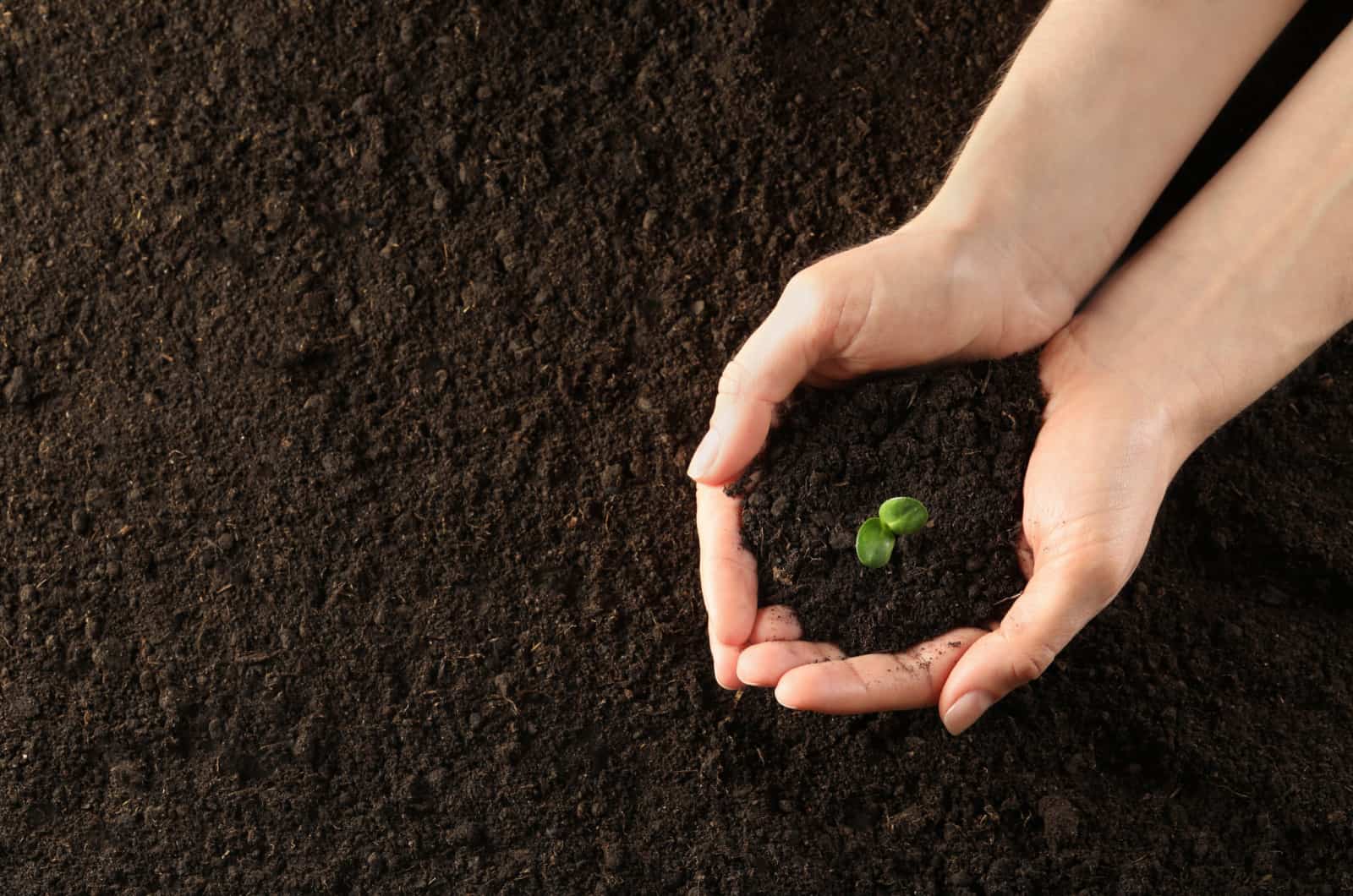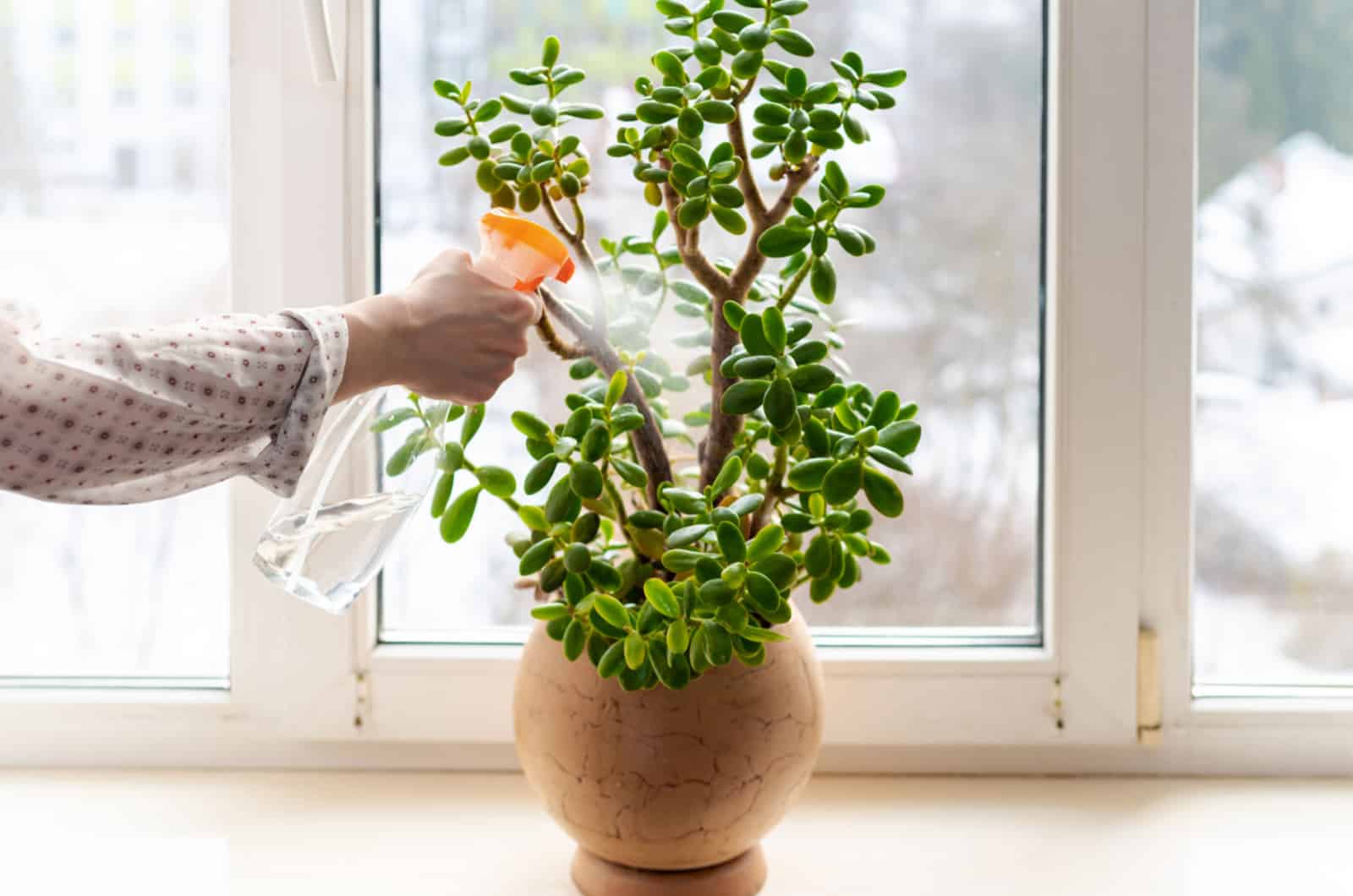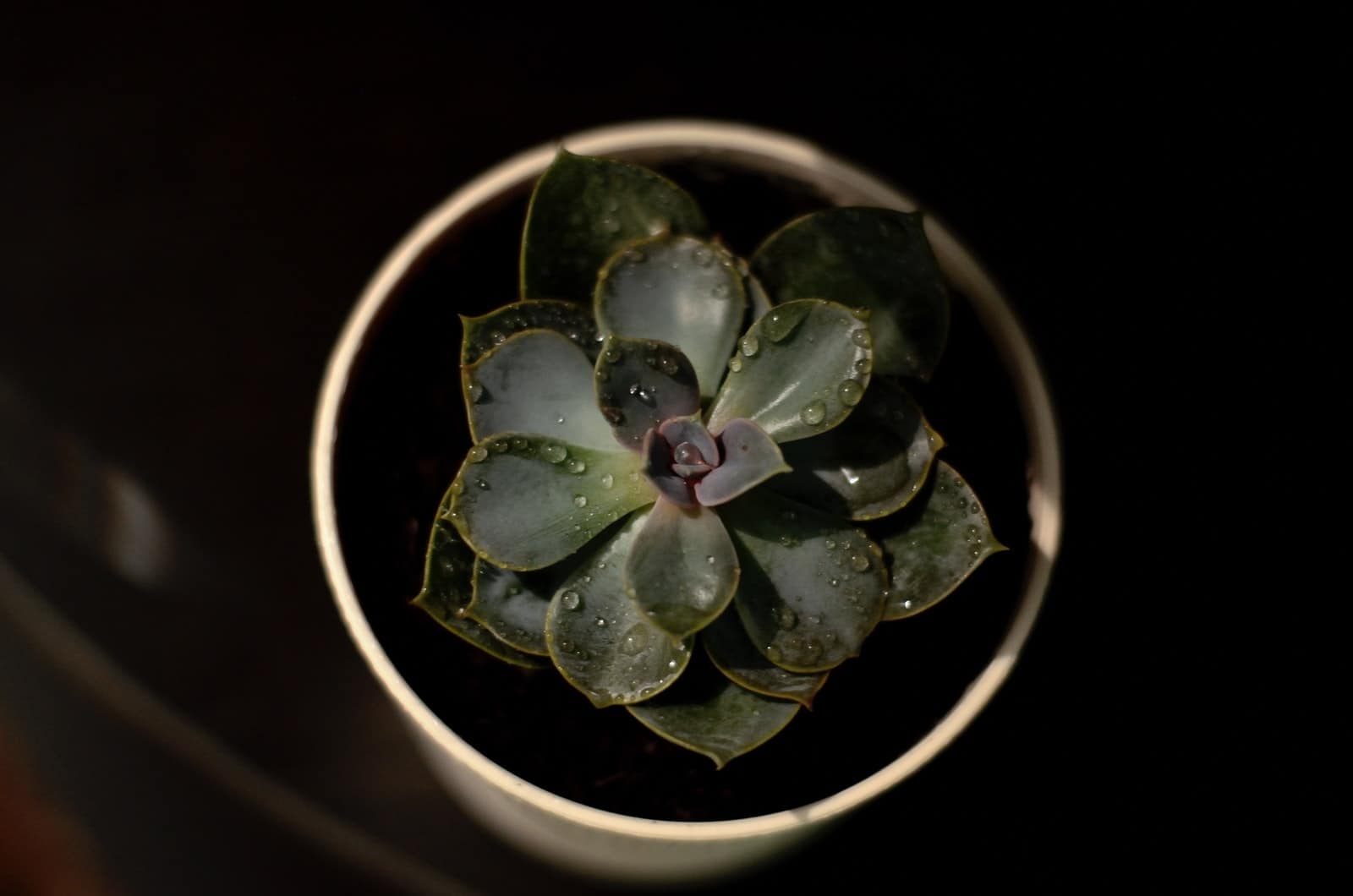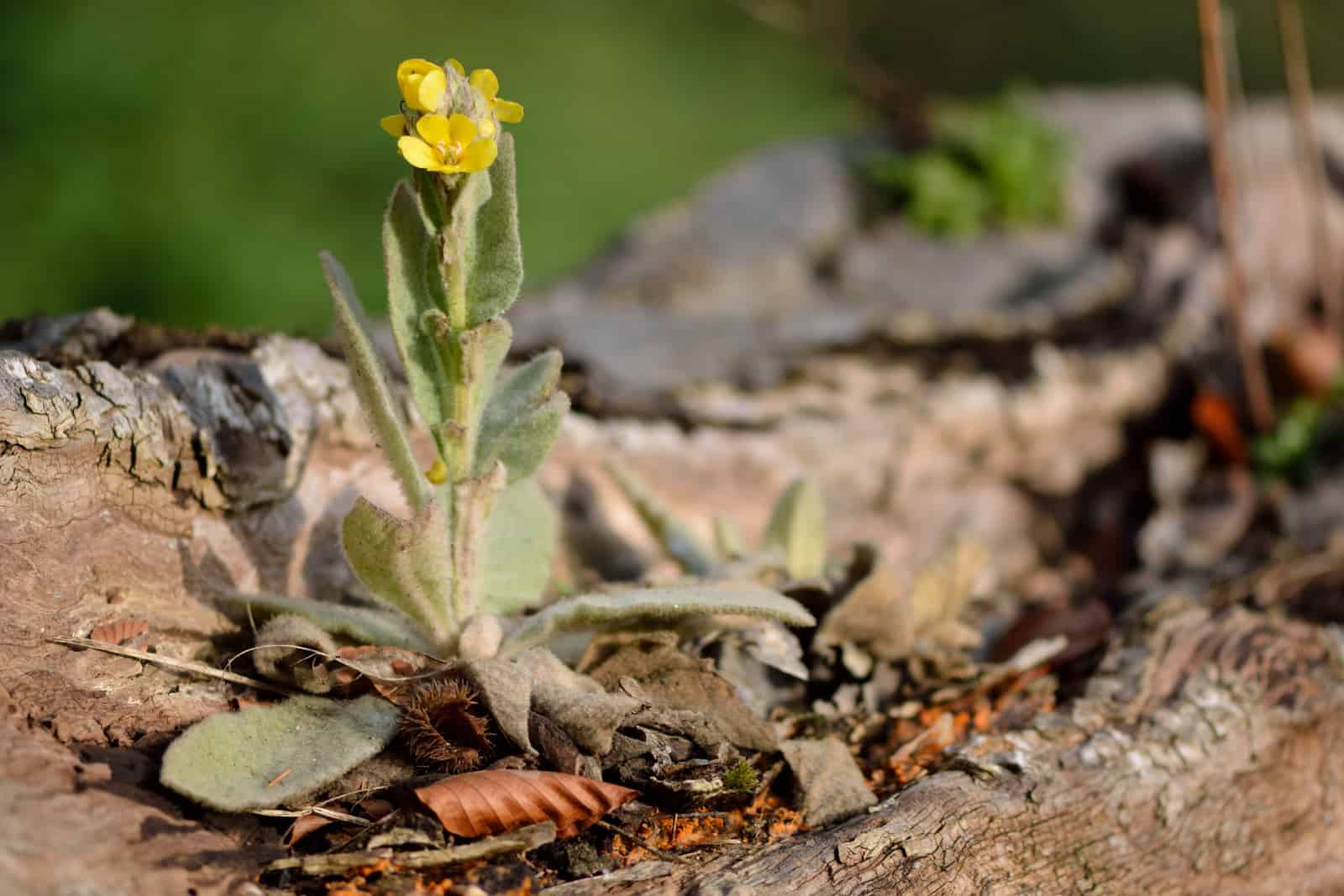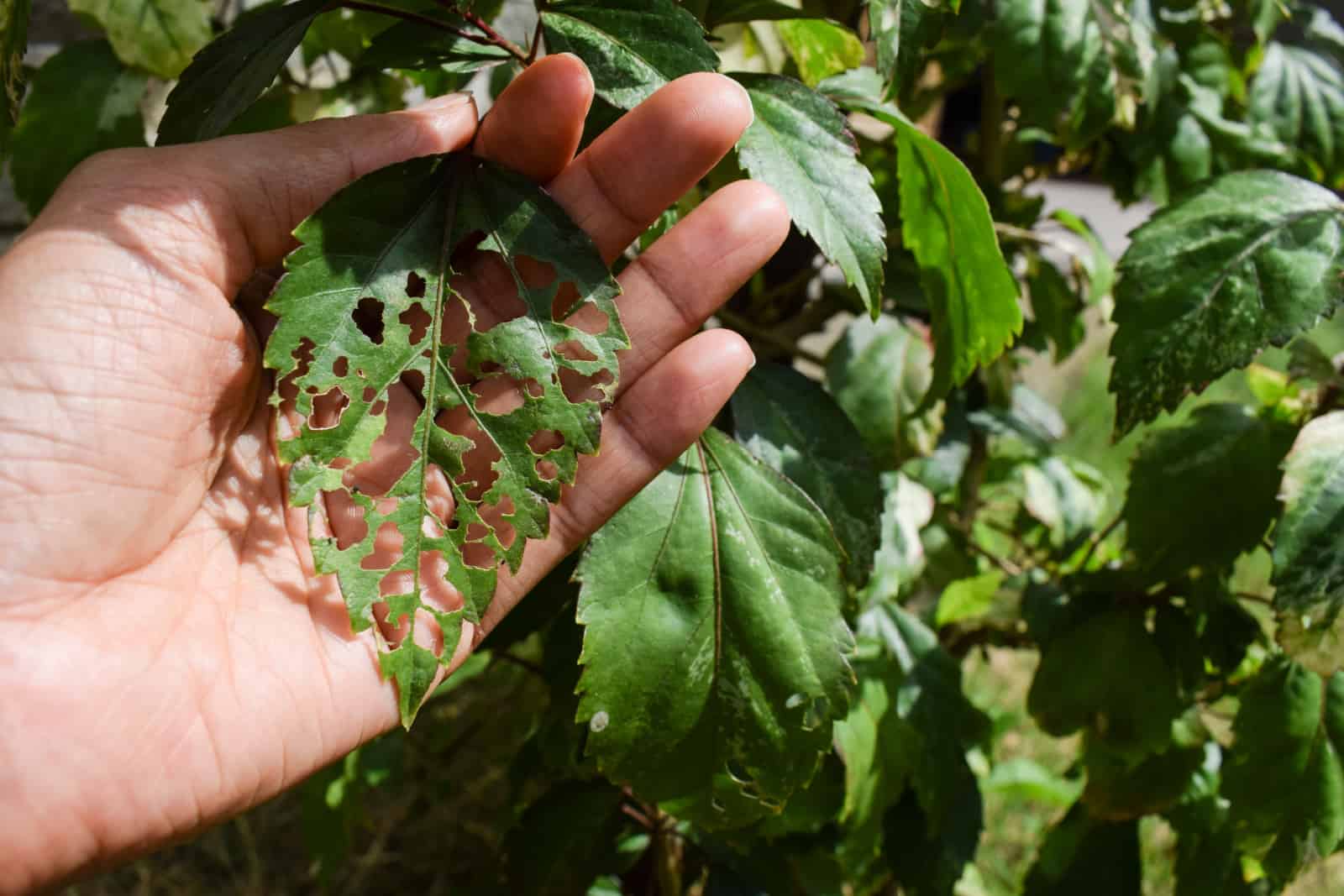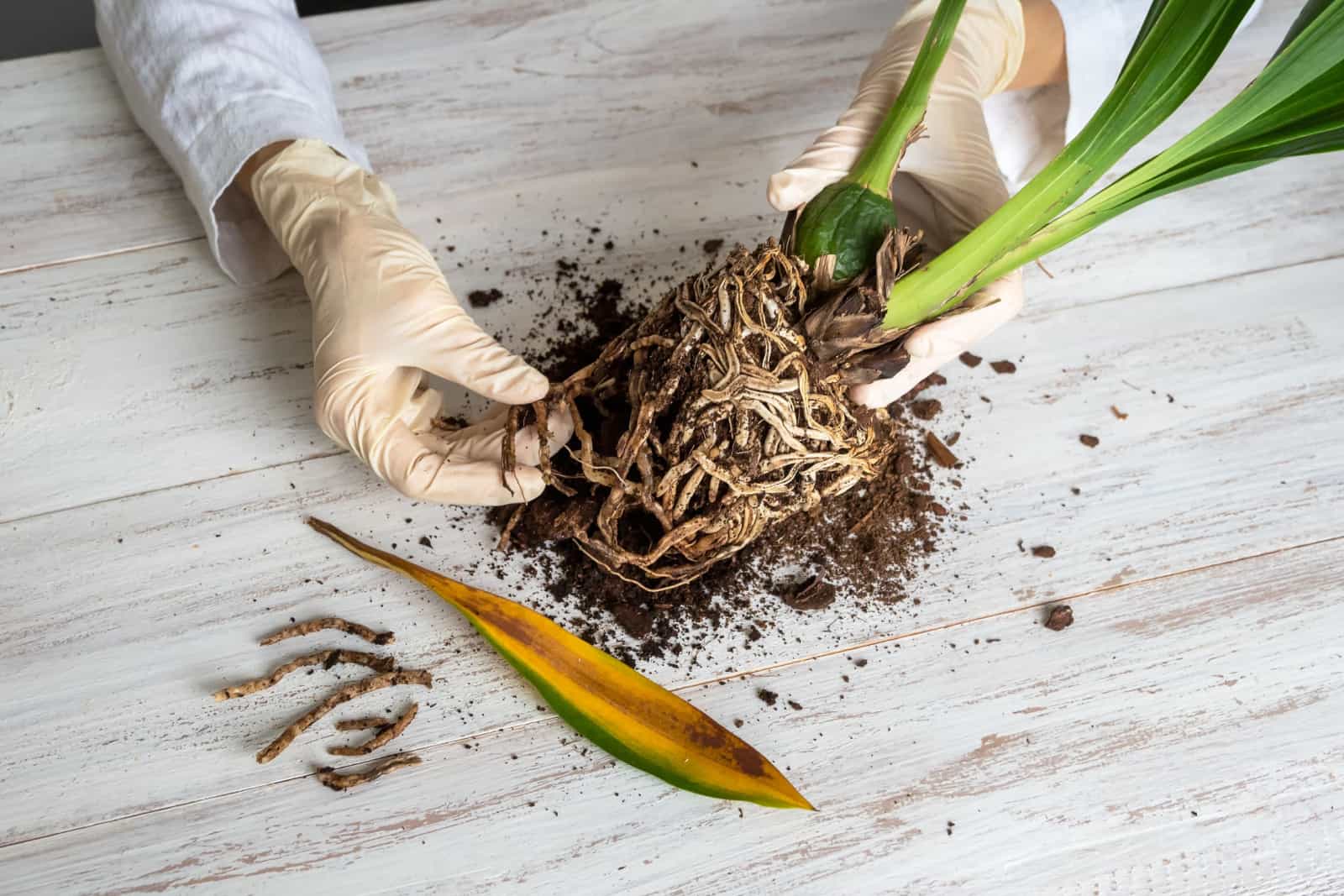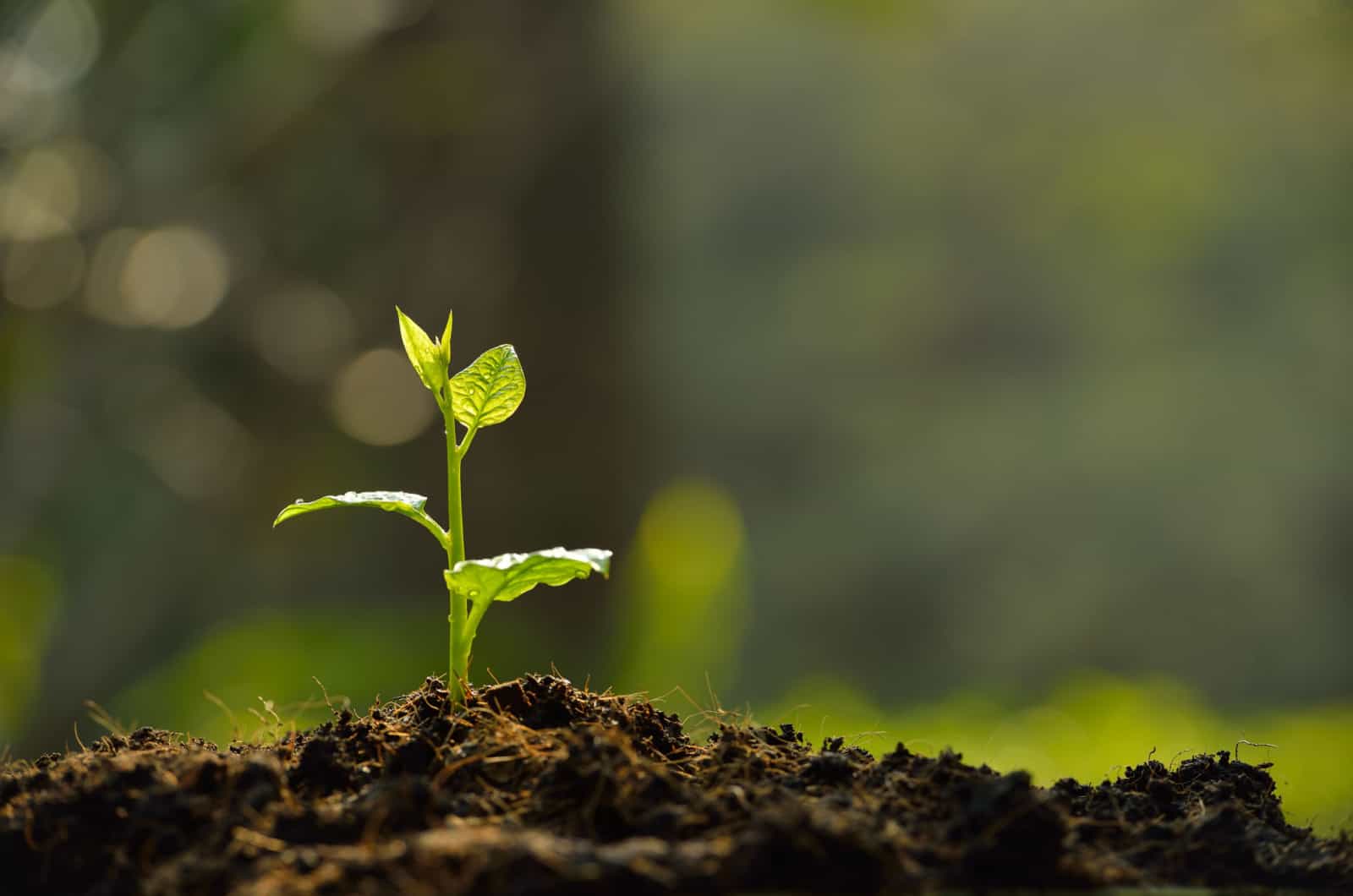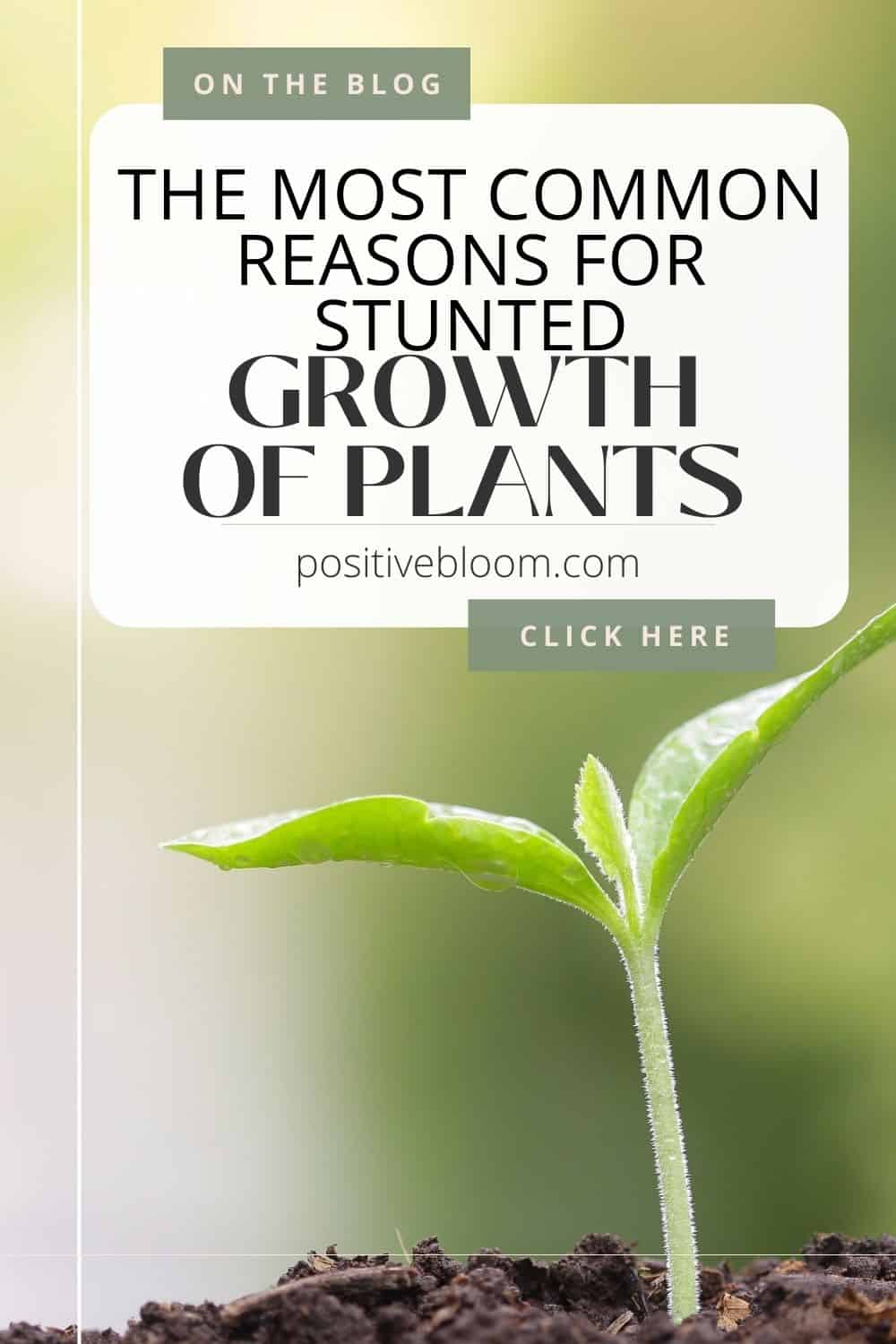You sow the seeds and see that little seedlings have started emerging, and then… everything stops. What could have possibly gone wrong so that you have ended up with stunted seedlings?
Well, the possibilities are endless — the answer could be bad seeds, the wrong soil type, or improper growing conditions. All these can result in stunted growth of plants, and the little seedlings are not the only ones that are affected.
You will often see that common houseplants stop growing due to inadequate conditions or some other issue that might result in stunting growth. Luckily, the majority of these issues are easily fixable and your plant will get back on track in no time once you solve them!
So, let’s take a closer look and see what might be the reason for stunted plant growth. When you identify the culprit, you can easily find the solution.
What Causes Stunted Growth Of Plants
Following an adequate plant care guide for any type of plant you own is the number one priority in gardening. Each plant species has its own plant care requirements, so you can’t use the same one for every plant in your collection.
The same thing applies to fruits and veggies, especially when you are dealing with fragile vegetable seedlings that are disturbed by minor inconveniences. Therefore, you have to take into consideration all the factors that affect seedling growth, including potting soil, watering needs, nutrient requirements, and temperature preferences (noninfectious properties).
However, my main focus won’t be on seedlings. Instead, I am going to use multiple examples of common houseplants and the possible reasons for their stunted growth so that you are able to choose different options for your own plants.
Improper Growing Conditions
As we already said, plant care should be your top priority. It is important that your plants or seedlings are comfortable enough to spread their roots and grow!
Meeting your plant’s needs is relatively easy since most plants are low-maintenance. There are certainly some tropical plants that are rather sensitive, but still, it isn’t too hard to take care of them.
All we want to see is healthy growth and development of our plants!
So, without further ado, let’s dive in!
Wrong Type Of Soil
The type of soil plays a crucial role in the well-being of your plant. Plant roots absorb the nutrients and water necessary for the plant’s survival. Poor soil type can cause lots of different problems, such as overwatering due to poor drainage.
Well-draining and loose soil is almost every plant’s favorite. Vegetable seedlings have a low chance of surviving in compacted clay soil.
The soil pH also plays a very important role since it affects the availability of nutrients in the soil. There are also certain plants that have either lower or higher pH levels. You would be surprised by how many acid-loving houseplants there are!
In most cases, the plant’s roots have to be able to breathe. Therefore, compact soil such as clay isn’t ideal for many plants. Porous and aerated soil is the best because it allows oxygen to reach the plant’s roots — especially for freshly sown seeds to ensure that germination occurs.
Poor drainage often leads to water-logged soil, and while some plants like to have soggy soil, most of them thrive in moist soil. Soggy soil leads to overwatering, which is often accompanied by root rot – a fungal infection that can completely ruin your plants.
To encourage a strong root system and water drainage, you can create your own soil mixture by combining sand with perlite, bark, and grit. If you are interested in seeing more, feel free to check out the best potting soil for Monstera — you can use it for many other tropical plants as well.
Inadequate Watering
Since we have already mentioned Monstera plants, let’s take a look at their watering needs. These are tropical beauties that thrive in consistently moist soil, so you will have to find a perfect watering schedule for them. They can be easily overwatered, which results in Monstera root rot.
However, lack of water can also cause certain issues that end up stunting plant growth. As a result, both underwatering and overwatering must be discussed.
These plants prefer moist soil, as we already stated. The soil will become compacted if you skip a few waterings, which stops the Monstera roots from effectively receiving nutrients and water, as well as airflow.
Instead of waxy, green leaves in this scenario, you will have discolored, wilting leaves.
By counting how many leaves are discolored, you can determine whether the problem is more serious. If only a few leaves turn yellow, for instance, they might just be older leaves that are most likely dead. If your Monstera is otherwise healthy, a few yellow leaves pose minimal threat.
Keep in mind that these plants prefer moist instead of soggy soil.
The soil will get excessively saturated if you water your Monstera too frequently. If you keep your plant in a humid environment, this may result in a number of problems. Your plant will be completely destroyed by root rot, a fatal disease that is brought on by soggy soil.
This specific problem may also be exacerbated by inadequate potting soil and poor drainage.
Always think about watering your plant first if you notice it has a lot of yellow leaves. Determine whether you have been under or overwatering the plant (just try to recall the last time you watered the plant) and then make the necessary corrections.
Read also: Annoying Monstera Problems And How To Fix Them
Incorrect Temperature
Wrong temperatures and sudden temperature changes may also result in stunted growth. While some plants can tolerate higher or lower temperatures, some tropical plants are quite sensitive and prefer growing in relatively warm temperatures without any low-temperature exposure.
For instance, many tropical beauties should be kept away from drafty windows and vents as they can suffer from cold damage. Let’s take a look at the pothos plant and its behavior when the temperature is not right as an example.
The plant’s leaves may curl and drop off for a variety of reasons, including inadequate temperature. High temperatures may promote the growth of the pothos plant, but anything above 110 degrees Fahrenheit can negatively affect the plant and, if left unchecked, may even be fatal.
When kept in hot temperatures, the plant’s leaves will curl to shield themselves from the heat. Additionally, this reduces their photosynthesis surface area, which is otherwise crucial for growth.
Heat reduces moisture, so when leaves are exposed to high temperatures, they are unable to perspire and eventually get dehydrated.
Additionally, keep in mind that the pothos is a tropical plant that doesn’t enjoy cold conditions. Typically, brown leaves are a sign of cold damage, and keeping them near windows with drafts is the usual reason.
This differs hugely from snake plant temperature tolerance because they can even tolerate growing at 100 degrees Fahrenheit during summer!
Lighting Conditions
Too much or not enough light can also be the reason for the stunted growth of plants. Most of them need energy from the sun in order to grow and thrive. Therefore, carefully examine the light requirements of your plant, and make sure to provide them.
For instance, cacti can grow perfectly fine in full sun exposure, while many tropical ones can’t tolerate any direct sunlight. This is because the cacti’s natural habitat is the desert, where they sit in the sun for the entire day. Tropical plants usually grow under big trees in rainforests, which means that they are shielded from direct sun exposure. This is why most of them thrive in bright indirect light.
We can take another look at the pothos example. The pothos plant requires eight to ten hours of bright indirect light daily. This aids in their capacity to carry out photosynthesis, preserve variegation, and supply an adequate amount of nutrients and water.
Direct sunlight damages the plant cells needed for photosynthesis. If the plant is left in the sun for a lengthy amount of time, the pothos leaves will get curly and crispy, making recovery impossible.
Low light will also harm your pothos and hinder photosynthesis, giving the impression that the entire plant is wilting.
These plants require intense bright light, which can be harmful if it is either direct or insufficient. The pothos leaves are likely not getting enough indirect sunlight if they grow or spread toward light sources.
Repotting Required
The need for repotting is also one of the biggest reasons for the stunted growth of plants. This is because the roots have already taken up all the space, and now there is not enough room for further growth and development.
There are some plants that like being rootbound, such as the Hoya lacunosa, while some plants need repotting as soon as you see the little roots coming out of the drainage holes. The roots, as well as the stunted growth, are often signs that your plant needs repotting.
In most cases, you will buy a pot that is about an inch or two larger than the current one. You can use the same soil, but I often advise using fresh soil that is not contaminated and pathogen-free.
When repotting, always check the roots to see if there is any rotting.
Be careful not to transplant your beloved plant to a pot that is too big — while this might seem like a good idea because the plant will probably grow in it, there would be too much soil that needs to be watered, so your plant will end up getting more water than it needs.
Some folks also keep their plants in the same pot, and just end up cutting the roots that have started coming out of the drainage holes. This is a way to keep your plant in the shape and size you prefer.
Check also: Detailed Step By Step Guide To Repotting Monstera Plants
Nutrient Deficiency
While some plants are self-sufficient and can grow almost anywhere, the majority of plants actually need specific nutrients to reach their full potential. Most plants require phosphorus, potassium, magnesium, and calcium for proper growth.
Nutrient deficiency often leads to stunted growth, yellowing leaves, wilting, and no fruit production. Here is an example of an orchid nutrient deficiency since they are very sensitive to inadequate growing conditions.
A nutrition deficiency can cause an orchid to droop and wilt very quickly. Because orchid mixtures aren’t particularly fertile, you’ll need to regularly supply the minerals these lovely plants require to be healthy.
Apart from wilting, chlorosis (yellowing of the leaves) is the most typical sign of nutrient insufficiency. It may also be followed by bud blast, leaf drop, and black rot, which is the darkening of the leaves, mainly on the tips and edges.
Before correcting a nutrient deficiency, it is crucial to identify the specific cause, since if you give your orchid a mineral it doesn’t need, you will only cause more harm than good. For instance, chlorosis and the curling of older leaves are typical signs of nitrogen deficiency. On the other side, a magnesium deficit also causes old leaves to turn yellow, although it generally comes with black rot.
If your orchid blossoms are purple or red, a magnesium deficit can also be identified by purplish leaf discoloration. In severe circumstances, it can also cause foliage drop and bud blast.
Furthermore, the elder foliage turns black and drops off when there is a potassium deficiency. Lack of calcium is another deficit that has an impact on new leaves. Darkening of the leaf tips and edges is a telltale sign, but in more severe situations, the leaves may drop off and the buds may burst. A lack of phosphorus can be identified by green or reddish leaves on the plant.
Now you know how the plant behaves when there is a specific nutrient lacking. A supplemental fertilizer can easily fix these issues. I usually use nitrogen-rich fertilizers for my tropical babies.
Pest Infestation
If you stick to the care guide religiously and provide your plant with the best growing conditions, it is highly unlikely that it will get pest infestations, especially if you grow it indoors!
However, you can still run across some pesky pests that find their way into your home.
Pest infestations are usually recognized by stunted growth, leaf discoloration, wilting, and spots all over the plant. You might also notice tiny webs in case of spider mite infestations. These little pests settle on your plant and steal its nutrients.
Here are some of the common pests that can be found on houseplants:
• Spider mites — spider mites are tiny insects that usually reside on the undersides of leaves. They produce tiny, silken webs just like spiders do! However, these mites usually live on indoor plants in warm, dry conditions.
• Aphids — tiny pests that frequently leave sticky residue on plant leaves. Despite their tiny size, these creatures can severely harm your plant. After the regular withering and curling of the leaves, a sticky substance appears. Serious infestations frequently result in wilting.
• Mealybugs — little white insects that ingest plant juices and drain off all of the nourishment. Mealybugs are commonly seen in colonies on the underside of leaves, where they are readily visible.
• Fungus gnats — tiny insects that occasionally hover near indoor plants. They affect organic materials, potting soil, soil, and other areas where organic matter breaks down. They can be problematic for indoor plants, nurseries, and greenhouses because their larvae eat roots. Drains, soggy ground, sick plants, and organic soil waste all attract them.
• Scales — their bodies have a distinct brown disc form. Sometimes, the waxy coating on these insects makes them look like white cotton tufts clinging to the leaves. Scales love to consume plant juice and suck away all of the nutrients.
You can get rid of these annoyances easily by applying neem oil, insecticidal soap, rubbing alcohol, or pesticides. Identify what type of pest you are dealing with and use the solution accordingly.
Plant Diseases
One of the most frequent plant diseases is root rot (we have already mentioned it a couple of times). This is a fungal infection primarily caused by overwatering. It affects the roots, which are the foundations of many plants. If left untreated, it can completely destroy the plant.
Other common plant diseases include downy mildew. Yellow leaves that eventually turn brown will be the first sign that your plant has downy mildew. Additionally, you’ll see that your plant is wilting, drooping, and producing fuzzy growth on the undersides of its leaves.
This disease also spreads swiftly, is easily contracted by other plants, and usually appears in humid environments.
The next disease is leaf spot. Pseudomonas spp. or Xanthomonas is the cause of this disease. Check for this disease if you observe dark spots, wilting, or dropping leaves. Wet leaves or water drops left on the leaves after watering are the main causes of leaf spot disease.
Many plants, including shrubs, trees, and even certain vegetables, are susceptible to crown rot disease. Crown rot is brought on by the fungal infection Helminthosporium, which releases a lot of airborne spores. These spores can spread quickly through rain and splashing water. They need fresh water for germination and for penetration into the host.
Dark, sunken, squishy, and wet regions are the first signs of infection. Your plant’s affected areas will ultimately turn brown, then dark brown or even black. By this time, some of the tissue has died, indicating significant damage.
Lastly, we will talk about anthracnose. The first signs of this fungal illness are yellow patches on the leaves. Eventually, the leaves will turn brown or yellow and drop off.
If left untreated, anthracnose, which typically appears in moist environments, can quickly spread to the remainder of the plant. Pruning the impacted leaves is the easiest approach to stopping this from occurring; just make sure to use sterile pruning shears.
Copper fungicide is another option; however, it mostly serves as a preventative measure.
Read also: Copper Fungicide Vs Neem Oil: What’s The Better Option?
To Sum Up
Those were all the common reasons for stunted growth of plants. We didn’t thoroughly mention the solutions because they vary from one plant species to another. This primarily depends on the plant’s specific plant care and growing requirements.
Therefore, I would suggest that you do your research on the plant that you are growing and make sure you provide it with the best possible growing conditions. In most cases, mimicking the plant’s natural habitat is the best plant care!
If you are dealing with either pest infestation or fungal infection, I would recommend that you try to get rid of them by using organic options instead of immediately applying pesticides. If this doesn’t work, then you should try insecticidal soap or pesticides.
I’m sure that you will get to the bottom of the issue and that your plant will continue to grow and develop!
I hope this article was helpful.
Until next time!
Like this post? Share or pin it for later!

